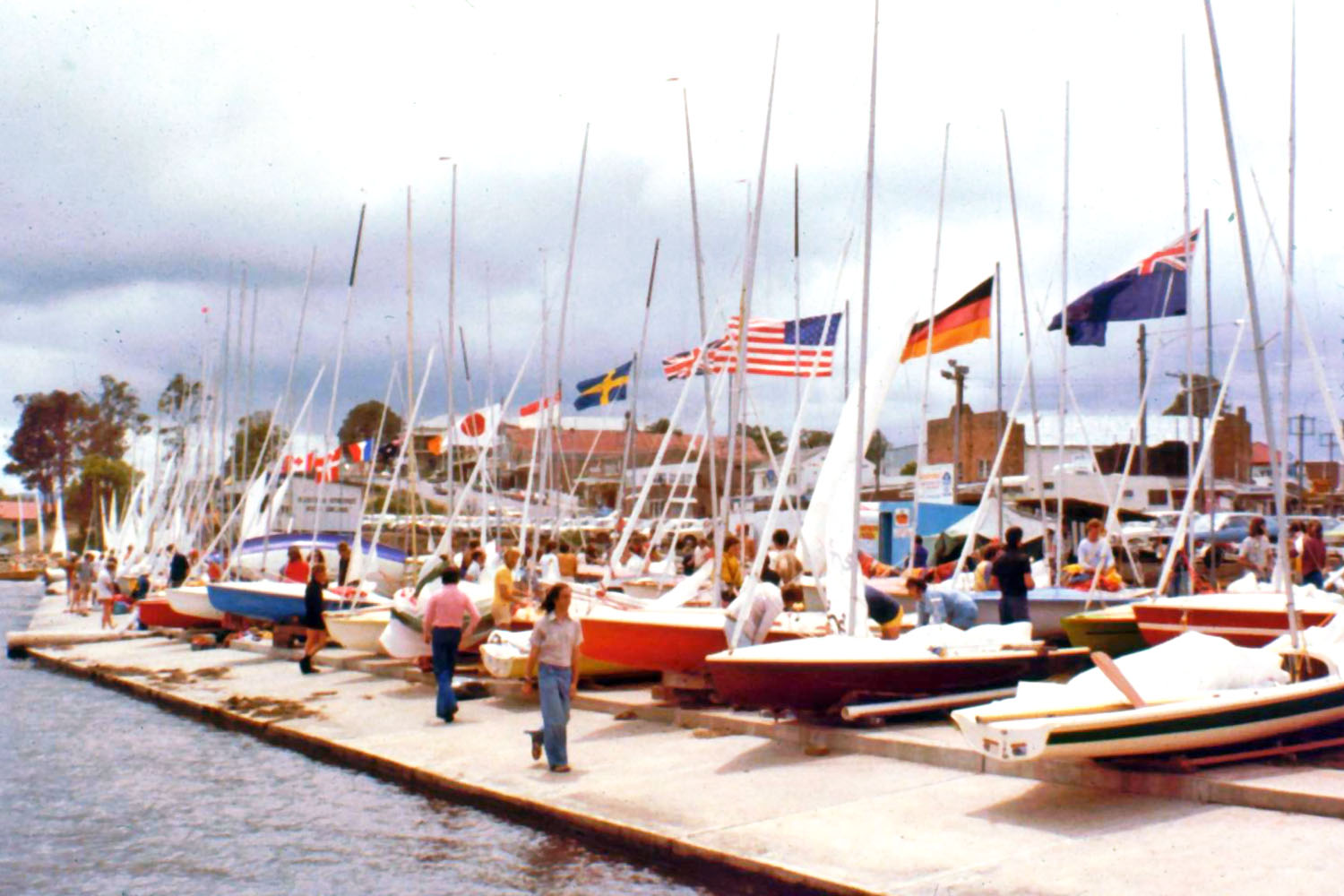Sydney was just as amazing as we dreamed of. Here came four full-blooded old men from "5o5 Tigers" led by a female team leader. 30'C warm and 22'C in the water, crystal clear and blue sky. We had intended to become surfing experts before the sailings that start in a week in Toronto. Göran and Magnus started by renting a surfboard at Sydney's biggest beach. After a lot of tossing and turning they got out into the surf, just in time for the wave "Arthur" to come crashing in, pushing them to the bottom and throwing the surfboard onto the beach, completely confused they managed to get to the beach and promised to leave the board back. The rest of us tipped directly into the shallows and didn't even manage to get out into the surf. It was like trying to lie on a bar of soap in a soap dish. Nice start! The rest of the baths were with Bodysurfing.
Toronto, where the WC was sailed, was a disappointment, a small town by a lake, which was as big as Björköfjärden at Rastaholm. We were there four days in advance, every day the sea breeze was about 8 meters, so we had some hopes. We were training against Magnus and Göran, who had borrowed an Australian boat, it was like sailing against a Trissjolle dinghy and we were 2-3 knots faster, we had the feeling that if we don't win now, we will never win!
Once the WC started the weather changed completely so we only got light breezes of 1-6 meters and no waves at all. We were 65 boats, 27 from Australia and the rest from England, USA, Hong Kong, Japan, Singapore, France, Germany, Canada, Denmark, Ireland and Sweden. We sailed a completely different course, Hellerup type but with very tight angled reaches, which could not be sailed with normal spinnakers, the sail angle was probably up to 70'. The Australians did not sail with normal spinnakers either, but with "Kites" which were only half as wide as ours. They also sailed in their own boats, marketed as "Kyrwood" which is a family that manufactured 5o5 for at least five years.
They built both in wood and glasfiber. Almost all had full glasfiber boats, built in Sandwich with Balsa in between, very stiff boats and also 5-10 kg below the minimum weight. Their centerboard and rudder were wooden but completely different from ours. Rigs were by All Spar and de Havilland, stiffer than ours. Sails were also the native ones, Hamilton and Peelgrane being the most popular, mainly much more open than ours. The jibs could be sheeted right into the half distance to the centerboard case, (I didn't see anyone doing that though).
The Australians dominated during the sailings, they got better the more wind there was and were actually faster than us on both upwind & downwind. We didn't manage to make a single improvment in gaining positions up to the top finishes in any of the races! Peter Colclough and John Loveday had been training for two weeks before the races started, they had also realized that special Kites were needed here to keep up with the reaches and had each acquired a Hamilton spinnaker.
Colclough sailed magnificently, from relatively poor starting positions he slowly worked his way forward with perfect upwind sailing, where he never missed a tack despite very shifting winds. The Australians were faster but did not sail as concentrated as Colclough. The final battle was entirely between the European champion and Terry Kyrwood/Reg Crick (Australian champions -76).
The sailing were organized by a motorboat club that had never before held any championship races, and that such a club should be allowed to organize a 5o5 World Cup I think is a scandal and so did almost all the other participants.
1) Peter Colclough/Steve Jones
2) Terry Kyrwood/Reg Crick
3) R. Nonris/I. Rudder
4) Geoff Kyrwood/Bob Kyrwood (age 60)
5) John Loveday/Lew Dann
Ulf and Jan Andersson came in 18th place, Göran and Magnus Olsson a little further down, but they had to borrow Australia's slowest 5o5. Jens Christensen came 22nd and Jens Markholm in 60th place!
It is difficult to evaluate anything from this WC, light winds and completely flat without any waves whatsoever. I think the spinnakers of the Aussies could be an evolution and should definitely be tested here at home. They are only 3.60m wide and are launched in the middle of the boat, very easy to handle, and they went at least as fast on the run.
The Kyrwood hulls seem perfectly fine, hugely stiff, well made and light. Costs about 5,600 SEK in Australia. John Loveday had to borrow a boat and thought it was clearly better than his own from Parker. Rigs and sails in general were suitable for these conditions but would not be something for us.
Jan Andersson
-
Toronto pictorial 2014
-
Royal Motor Boat YC
□ Aerial View 2016
□ Historical Site Facebook -
A five-of family 1979
— Sv.505 Förbundet —
Uppdaterad 2023-03-10
